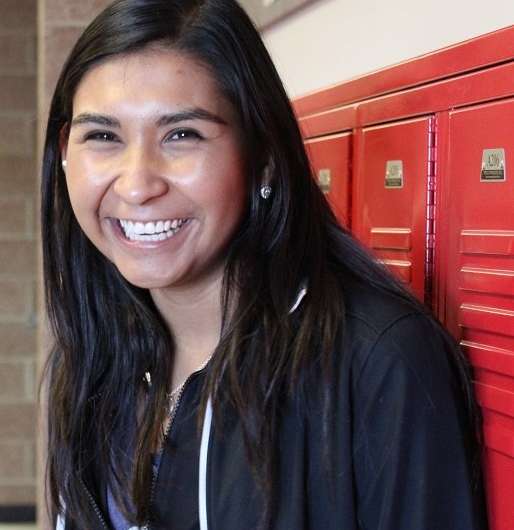Student at one of the surveyed schools. Credit: Provided/Colorado State University Tri-Ethnic Center for Prevention Research
Since 1975, Colorado State University social scientists have studied rates of drug and alcohol use among American Indian youths living on or near reservations. Their latest published results underscore a trend that has persisted over many decades: Native adolescents are more likely to use alcohol and illicit drugs than non-Native adolescents in the United States.
The researchers are from the CSU Tri-Ethnic Center for Prevention Research, part of the Department of Psychology in the College of Natural Sciences. A study published in the open-access journal JAMA Network Open, authored by center director and Senior Research Scientist Randall Swaim and Senior Research Scientist Linda Stanley, reported results from a 2016-17 survey. The survey was administered to about 1,660 American Indian students at 31 schools across the U.S. in 8th, 10th and 12th grades living on or within 25 miles of a reservation.
"We do not want these data to be used to stigmatize American Indian kids," Swaim said. "We would like our results to continue drawing attention to the experiences of children living on or near reservations. The populations we survey experience high rates of negative, adverse childhood events such as trauma and loss, suicide and violence. Yet these populations have also shown great resilience in the form of extended family and community spirit."
The Tri-Ethnic Center has decades of expertise collecting data on the attitudes, values, beliefs and behaviors around substance abuse among mostly rural American Indian youth. The researchers are supported by a five-year, $2.98 million grant awarded in 2015 by the National Institute on Drug Abuse, part of the National Institutes of Health. Swaim and Stanley presented their latest findings at the Society for Prevention Research conference in Washington, D.C., May 29-June 1.
"In our work, we are tracking trends over time," Stanley said. "We are able to see changes relative to the national sample. And unfortunately, there have not been very many changes over time."
The researchers typically compare their survey results to an ongoing University of Michigan survey, "Monitoring the Future," which tracks substance use and abuse across a general sampling of U.S. adolescents. The CSU survey, called "Our Youth...Our Future," closely mirrors questions from "Monitoring the Future" so that researchers can draw direct comparisons between the two groups.
In their latest results, for example, 8th-grade Native students were 4.8 times more likely to use cannabis, or marijuana, than non-Native students. For Native 12th graders, the likelihood of cannabis use was 1.6 times higher than other 12th-graders. Eighth-graders consistently showed the greatest disparities of use between Natives and non-Natives, the researchers said. They noted that there was little to no increase in relative risk for cannabis use in 2016-17 compared with their last datasets from 2009-12, despite recent trends in state-level legalizations of the drug.
The researchers also point to concern around alcohol use. According to their results, 4 in 10 Native middle school students have used alcohol, and nearly 1 in 4 have "been drunk." These rates are persistently higher than the general 8th-grade populations reflected in "Monitoring the Future."
The researchers continue to stress early prevention programs—well before eighth grade—as well as culturally sensitive interventions to address the issues they've documented.
More information: JAMA Network Open, DOI: 10.1001/jamanetworkopen.2018.0382
Provided by Colorado State University






















